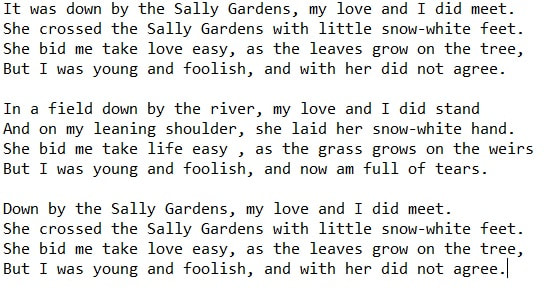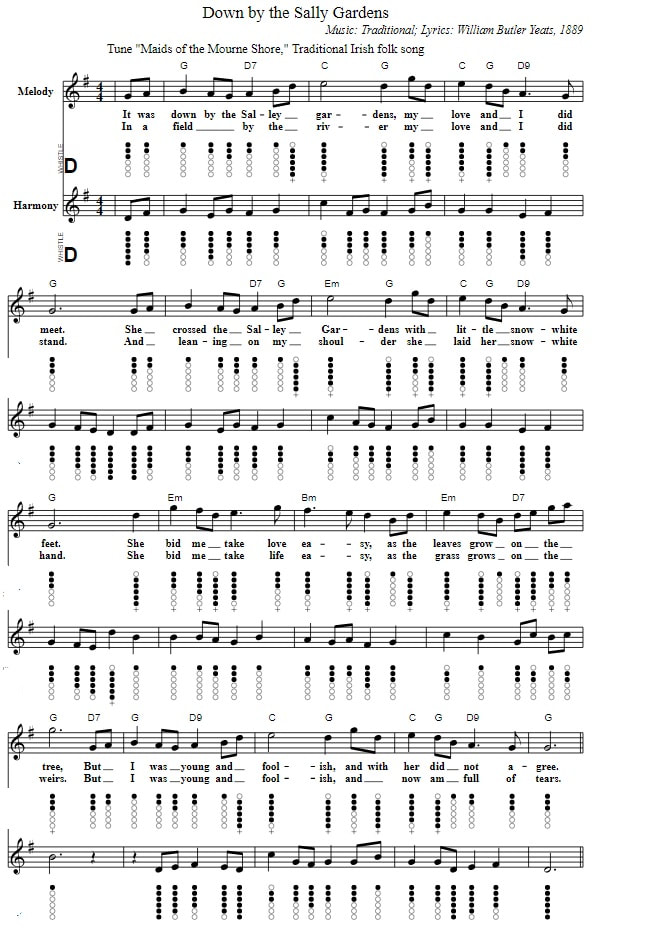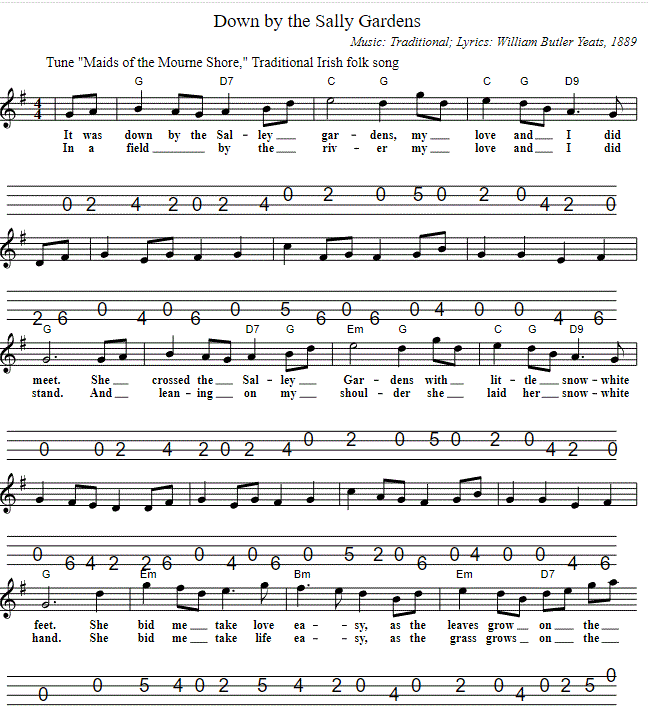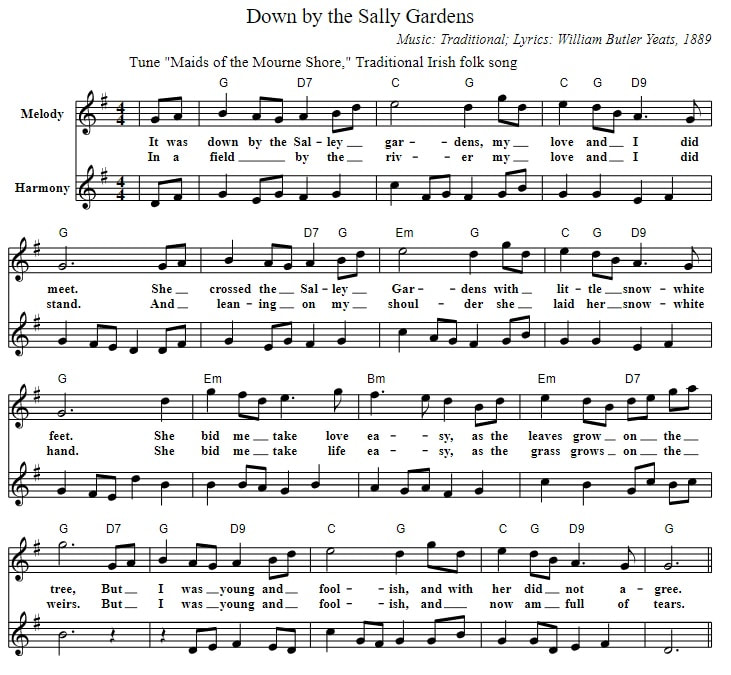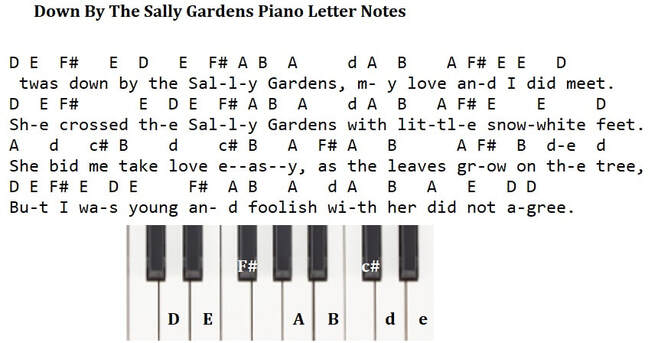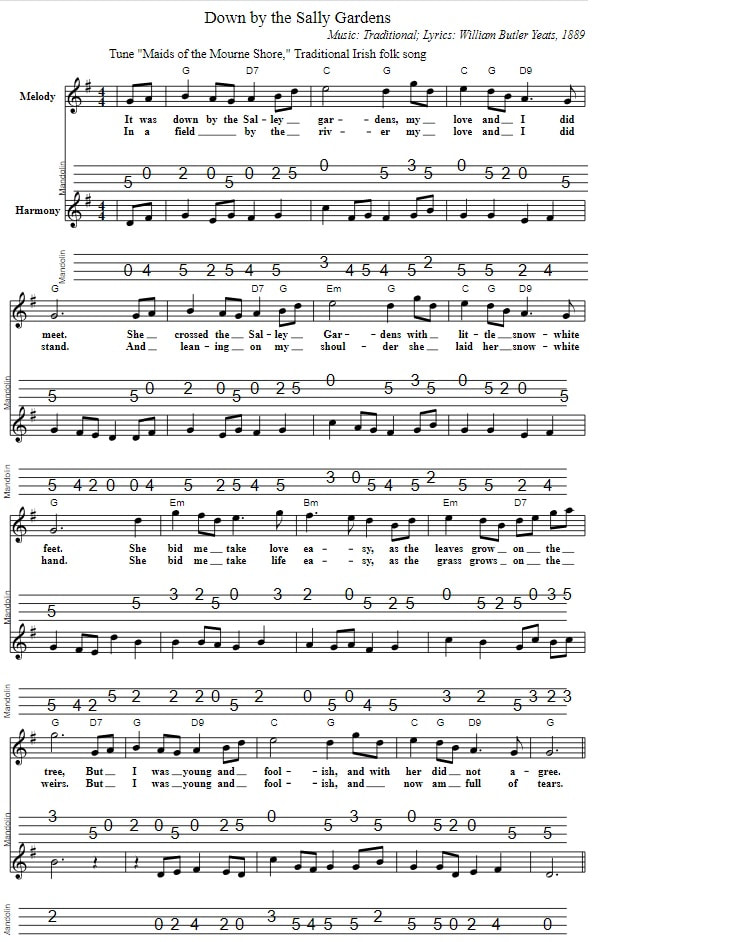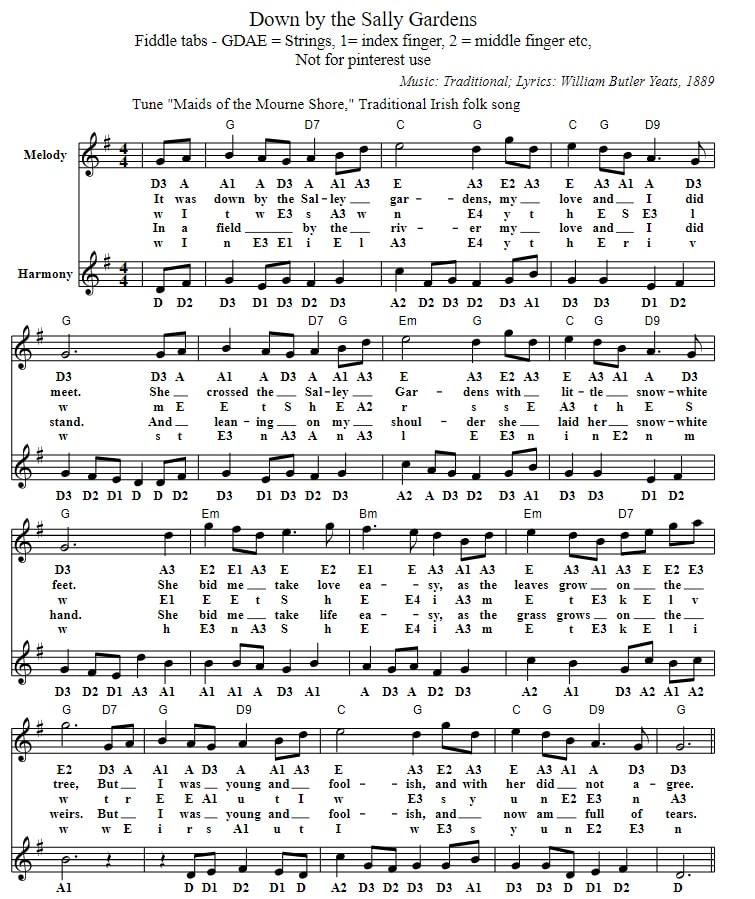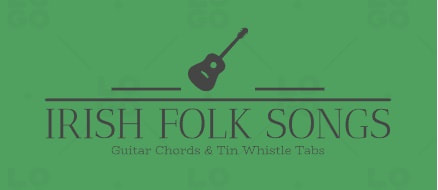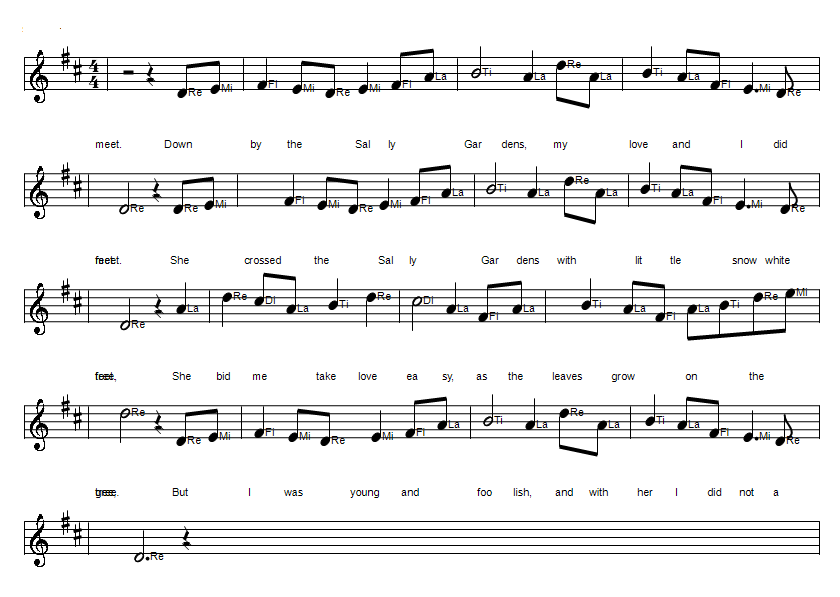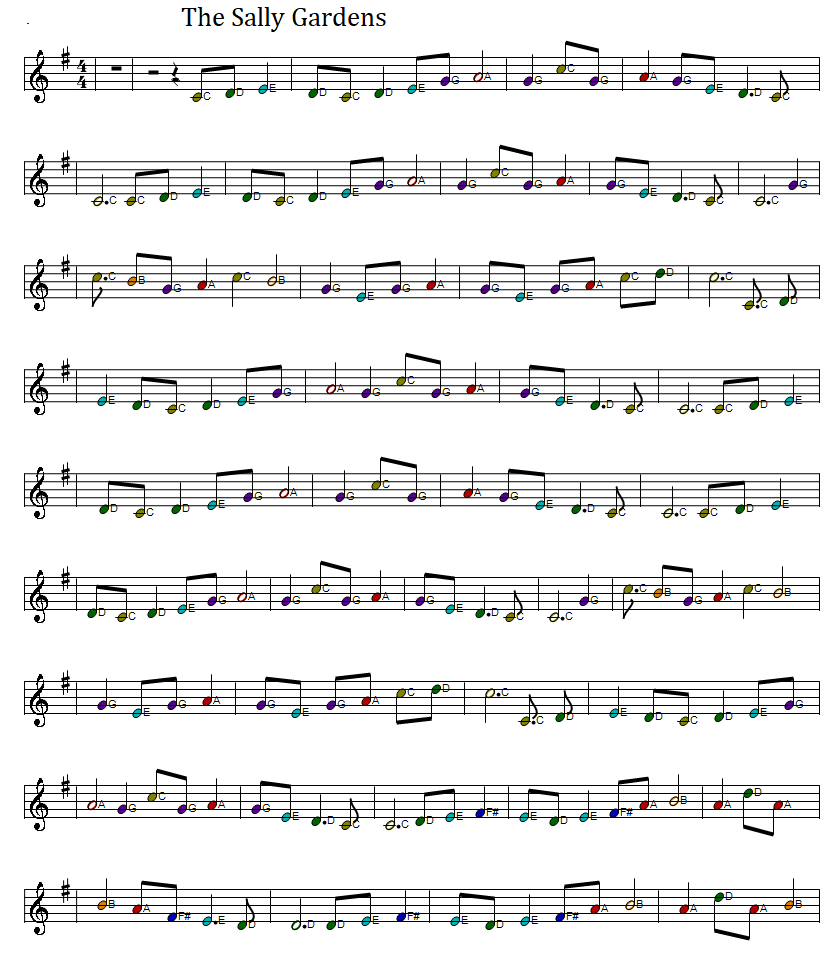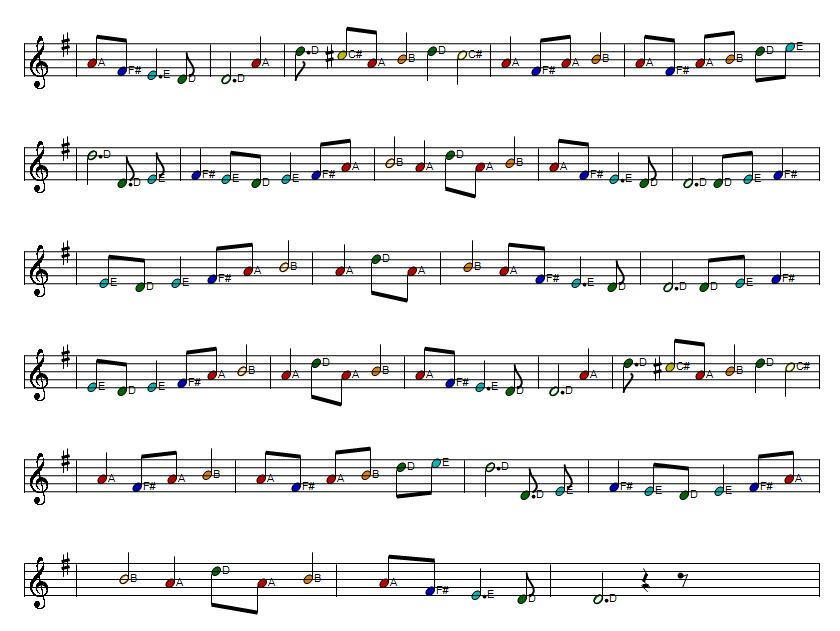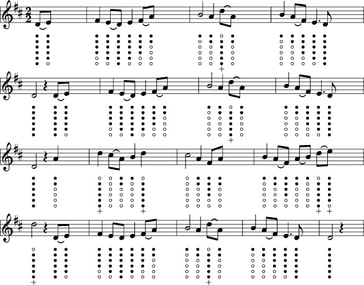Down By The Sally Gardens Lyrics And Chords
The Sally Gardens Lyrics And Easy Guitar Chords tab. The full piano sheet music is included in the key of G Major plus the 5 string banjo chords and the tin whistle notes. Down by the Sally Gardens solfege [ Do re mi ] sheet music notes in the key of D Major now added plus the mandolin / 4 string banjo tab. The format of chords is chordpro. The music time signature is 2/2. The Video Is Orla Fallon, the second version is by Maria and Jim Conneely vs Banj O'Harrigan. Written by W.B. Yeats.A sally is a willow tree, and they used withes of the willow tree to fasten thatching on roofs back in the old days in Ireland. Each village had a bush of willow trees on the outskirts, primarily to provide the necessary material for thatching, and this bush was called the "sally gardens." It was also the 19th century equivalent of a "lovers' lane" where the young folk would go to be alone. An Irish folk song. The song was also a big hit for Maura O'Connell And Karen Matheson.Down by the Sally gardens piano letter notes for beginners now added plus the violin tab showing where to place your fingers on each string for every note played. Now added is the tenor guitar / mandola tab in CGDA.
It[D] was down by the[A] Sally[G] Gar[D]dens, my[G] love and[A] I did[D] meet.
She[D] crossed the[A] Sally[G] Gardens[D] with[G] little [A]snow-white[D] feet.
She[D] bid me[G] take love[A] easy, as the[Bm] leaves grow[G] on the[D] tree,
But I was[A] young and[Bm] fool[A]ish, and with[G] her did[A] not agr[D]ee.
In a field down by the river, my love and I did stand
And on my leaning shoulder, she laid her snow-white hand.
She bid me take life easy , as the grass grows on the weirs
But I was young and foolish, and now am full of tears.
Down by the Sally Gardens, my love and I did meet.
She crossed the Sally Gardens with little snow-white feet.
She bid me take love easy, as the leaves grow on the tree,
But I was young and foolish, and with her did not agree.
She[D] crossed the[A] Sally[G] Gardens[D] with[G] little [A]snow-white[D] feet.
She[D] bid me[G] take love[A] easy, as the[Bm] leaves grow[G] on the[D] tree,
But I was[A] young and[Bm] fool[A]ish, and with[G] her did[A] not agr[D]ee.
In a field down by the river, my love and I did stand
And on my leaning shoulder, she laid her snow-white hand.
She bid me take life easy , as the grass grows on the weirs
But I was young and foolish, and now am full of tears.
Down by the Sally Gardens, my love and I did meet.
She crossed the Sally Gardens with little snow-white feet.
She bid me take love easy, as the leaves grow on the tree,
But I was young and foolish, and with her did not agree.
Here are the easy guitar chords that Orla Fallon sings in
[G]down [C]by the[G] Sally[F]Gar[C]dens, my[F]love and I did[C] meet.
She[C] crossed the[G]Sally[F]Gar[C]dens with[F] little [G]snow-white[C] feet.
[G]She[C] bid me[F] take love[G]ea[C]sy, as the[F] leaves grow[G] on [C]the[F] tree[C],
[C]But I was[G] young and[F]fool[C]ish, and with[F] her did[G] not a[C]gree.
[C]In a field down [G]by the [F]riv[C]er, my [F]love and [G]I did [C]stand
[C]And on my [G]leaning [F]shoul[C]der, she [F]laid her [G]snow-white [C]hand.
[G]She bid [C]me [F]take life [G]eas[C]y , as the [F]grass grows [G]on the [C]weirs
But [C]I was [G]young and [F]fool[C]ish, and [F]now am [G]full of [C]tears.
Music break
C G F C F G C
The 5 string banjo chords are below in G Major.
Back to the Irish Songs From C-F
[G]down [C]by the[G] Sally[F]Gar[C]dens, my[F]love and I did[C] meet.
She[C] crossed the[G]Sally[F]Gar[C]dens with[F] little [G]snow-white[C] feet.
[G]She[C] bid me[F] take love[G]ea[C]sy, as the[F] leaves grow[G] on [C]the[F] tree[C],
[C]But I was[G] young and[F]fool[C]ish, and with[F] her did[G] not a[C]gree.
[C]In a field down [G]by the [F]riv[C]er, my [F]love and [G]I did [C]stand
[C]And on my [G]leaning [F]shoul[C]der, she [F]laid her [G]snow-white [C]hand.
[G]She bid [C]me [F]take life [G]eas[C]y , as the [F]grass grows [G]on the [C]weirs
But [C]I was [G]young and [F]fool[C]ish, and [F]now am [G]full of [C]tears.
Music break
C G F C F G C
The 5 string banjo chords are below in G Major.
Back to the Irish Songs From C-F
Guitar tab fingerstyle Down By The Sally Gardens. More Irish guitar tabs here
Down by the sally gardens tin whistle sheet music notes
Below is the list of songs that are in the ebook. This is the largest collection of tin whistle songs ever put together.[About 600 songs ]
All of the songs have been made as easy to play as was possible.
The price of this ebook is €7.50 and it will be emailed to you after payment.
All of the songs have been made as easy to play as was possible.
The price of this ebook is €7.50 and it will be emailed to you after payment.
And below is the tenor guitar / mandola tab in CGDA tuning
Mandolin tab for down by the sally gardens in G Major
Down by the Sally Gardens solfege [ Do re mi ] piano sheet music notes in the key of D Major
The full sheet music score of The Sally Gardens
